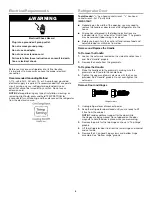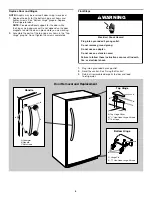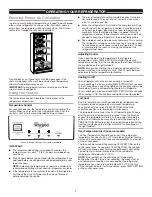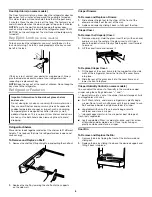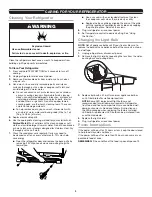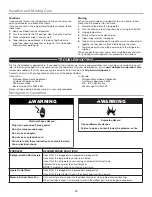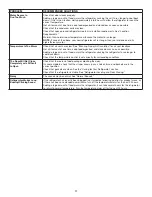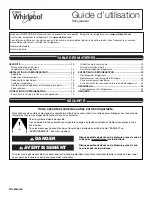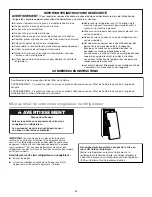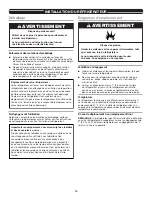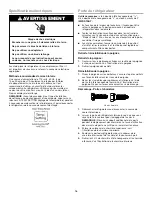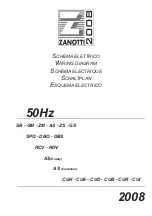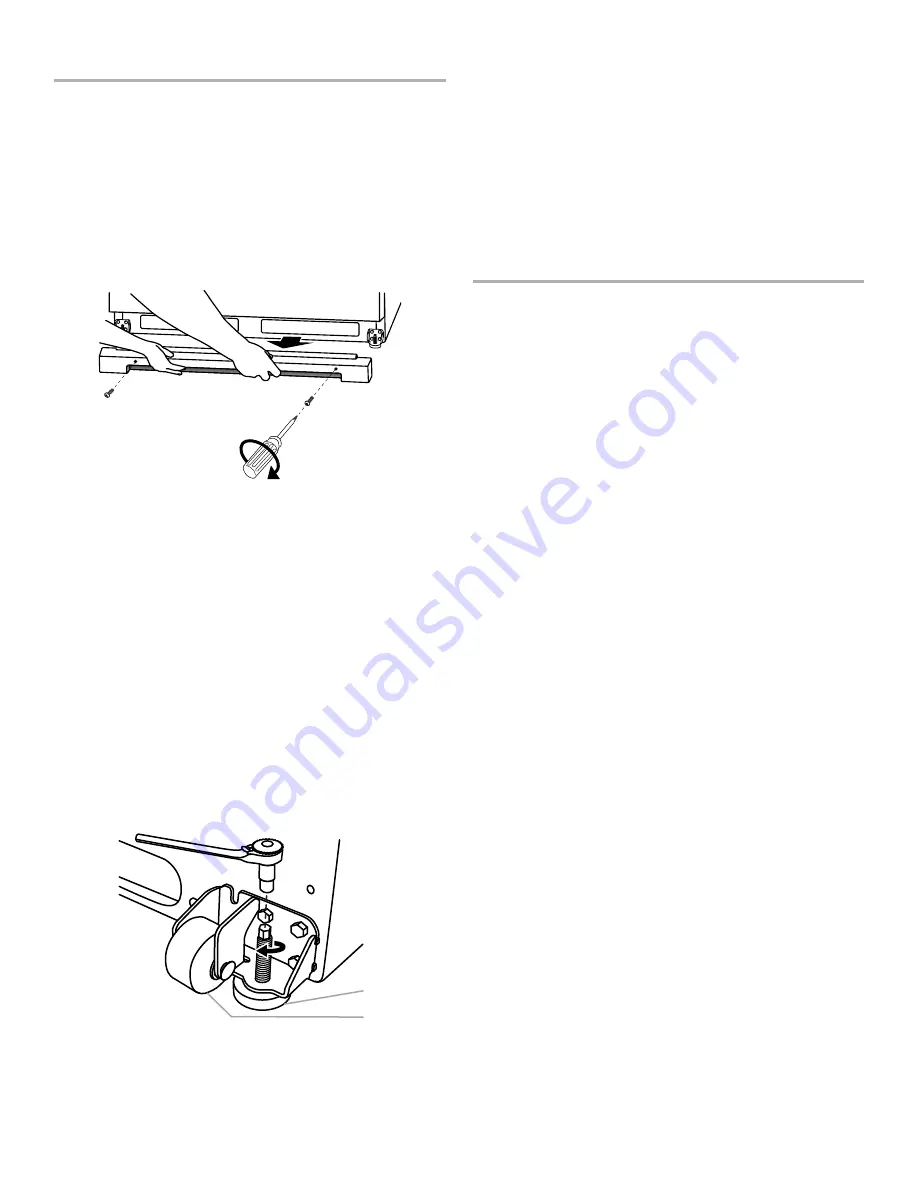
6
Refrigerator Leveling and Door Closing
Your refrigerator has two front adjustable legs — one on each
side. The back of the refrigerator rests on two fixed rollers. The
base grille covers the adjustable brake feet and roller assemblies
located at the bottom of the refrigerator below the refrigerator
door. Before making any adjustments, remove the base grille and
move the refrigerator to its final location.
Tools Needed:
1
/
4
" hex driver, Phillips screwdriver
1.
Remove the base grille screws. Grasp the grille firmly and
pull it toward you. Open the refrigerator door to access the
brake feet.
NOTE:
To allow the refrigerator to roll more easily, raise
the brake feet by turning them counterclockwise. The front
rollers will be touching the floor.
2.
Move the refrigerator to its final location.
3.
Lower the brake feet, by turning them clockwise, until the
rollers are off the floor and both brake feet are snug against
the floor. This keeps the refrigerator from rolling forward when
opening the refrigerator door.
IMPORTANT:
If you need to make further adjustments
involving the brake feet, you must turn both brake feet
the same amount to keep the refrigerator level.
4.
Make sure the door closes easily. If you are satisfied
with the door opening and closing, skip the next section.
If, however, the door does not close easily or the door pops
open, adjust the tilt.
To Adjust the Cabinet Tilt:
NOTE:
Having someone push against the top of the refrigerator
takes some weight off the brake feet. This makes it easier to
turn them.
■
Open the refrigerator door. Use a
1
/
4
" hex driver to turn both
brake feet clockwise the same amount. This will raise the
front of the refrigerator. It may take several turns to allow the
door to close more easily.
5.
Make sure the refrigerator is steady. If the refrigerator seems
unsteady or rolls forward when the door is pulled open,
adjust the brake feet.
To Steady the Refrigerator:
■
Open the refrigerator door. Using a
1
/
4
" hex driver, turn
both brake feet clockwise the same amount until the
brake feet are snug against the floor. Check again. If
not satisfied, continue to adjust the brake feet by half
turns of the screw until the refrigerator does not roll
forward when the door is opened.
6.
Replace the base grille by aligning the ends of the grille with
the leveling assemblies on each side and snapping the grille
into place. Reinstall the Phillips screws.
Normal Sounds
Your new refrigerator may make sounds that your old one
didn’t make. Because the sounds are new to you, you might be
concerned about them. Most of the new sounds are normal. Hard
surfaces, like the floor, walls, and cabinets, can make the sounds
seem louder. The following describes the kinds of sounds and
what may be making them.
■
Your refrigerator is designed to run more efficiently to keep
your food items at the desired temperatures and to minimize
energy usage. The high-efficiency compressor and fans may
cause your refrigerator to run longer than your old one. You
may also hear a pulsating or high-pitched sound from the
compressor or fans adjusting to optimize performance.
■
You may hear the evaporator fan motor circulating air through
the refrigerator compartment. The fan speed may increase as
you open the doors or add warm food.
■
Rattling noises may come from the flow of refrigerant or items
stored on top of the refrigerator.
■
Water dripping on the defrost heater during a Defrost cycle
may cause a sizzling sound.
■
As each cycle ends, you may hear a gurgling sound due
to the refrigerant flowing in your refrigerator.
■
Contraction and expansion of the inside walls may cause
a popping noise.
■
You may hear air being forced over the condenser by the
condenser fan.
■
You may hear water running into the drain pan during the
Defrost cycle.
A
¹⁄₄
"
B
A. Brake foot
B. Front roller




